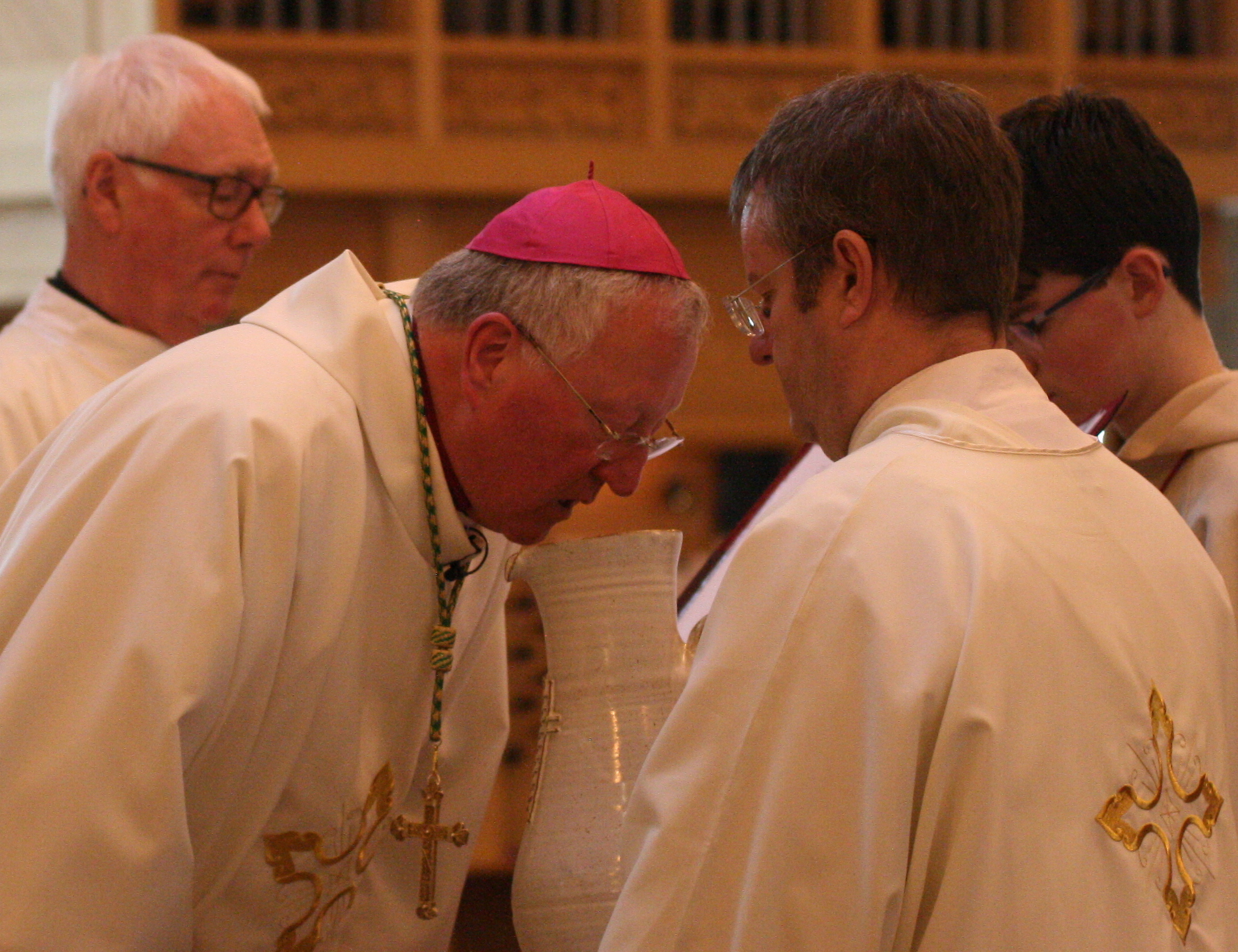In his column this month, Bishop Terry has some suggestions to enhance our Holy Week observations…
PALM SUNDAY
We begin our Holy Week celebrations. The procession Gospel sets the scene. Then Isaiah tells us of the suffering servant. Jesus now fulfils this role. The second reading is from St Paul’s letter to the Philippians. As the reading is proclaimed you experience the Kenosis/Christ’s self-emptying, then the upward movement of Jesus to the glory of the resurrection. The Gospel is the Passion reading. The different voices add to this drama. We enter the scene. Perhaps we could imagine which character we identify with as we continue our journey through this Holy Week.
HOLY THURSDAY
The Passover is proclaimed at this Mass. It relays the Exodus event, full of drama and details of how to prepare, cook and eat this meal. This is celebrated each year and Jesus celebrated it at the Last Supper. It reminds us of a journey, being fed and nourished and led by God’s actions. In the second reading, St Paul gives us the first account of what Jesus did at the Last Supper. We are set free from the slavery of sin. “He took, blessed, broke and gave.” All these actions we encounter in the Eucharist. The Gospel is St John’s account of the washing of the feet. This action offers us the challenge to do the same. Then the transfer of the Blessed Sacrament helps us experience that emptiness. Spending time in prayer helps us enter more deeply into this celebration.
GOOD FRIDAY
The day we remember in our liturgy that Jesus died on the Cross. The main parts are – Liturgy of the Word, Solemn Intercessions, Adoration of the Cross, Holy Communion. The reading from Isaiah is taken from the Canticle of the Suffering Servant. This reading reminds us of the sacrificial Lamb as we were similarly reminded on Holy Thursday. Jesus is the Lamb of God, a common reference throughout Lent. The Letter to the Hebrews is about Jesus’ Priesthood, showing us how he lived that out through his ministry. We listen to St John’s account of Jesus’ Passion. It is Jesus who is in control. It is a dramatic reading showing betrayal, abandonment, Jesus reflecting, but finally putting his faith in his Father’s will.
EASTER VIGIL
Our Lent has been progressing to the Vigil. In order to experience the beauty of this celebration it should begin in darkness. The wonder of the Liturgy is most effectively proclaimed when we use the symbols to the fullest. The fire reminds us of Moses encountering God in the burning bush, the charcoal fire at Jesus’ trial, the fire to cook breakfast on the shore of Galilee. The Easter fire needs to show the light dispelling the darkness. The Paschal Candle represents Christ rising from the darkness of death to the newness of life. The Exsultet is our joyful, exulting song of the Resurrection and our redemption. It is in the light of the Paschal Candle that we now listen to the Old Testament readings. This can lead to an encounter with Jesus as he breaks open to us the message of our salvation. In the light of the Risen Jesus, we can see how all these readings prefigure him. The reading from St Paul to the Romans is proclaimed and then we sing the Easter Alleluia. An account of the empty tomb is proclaimed leading to the faith in the Resurrection. The Baptismal liturgy follows, or the blessing of the Easter water. Eastertide begins!
EASTERTIDE
The 50 days of Easter celebrate the joyful news of the Resurrection. Easter Day has so much meaning in the life of the Christian faithful that it takes 50 days to celebrate it well. One week is not enough. Nor even a week of weeks. Rather it takes seven times seven days, plus one. A fullness of time observes the fullness of Easter. Alleluia!
In blessed hope,

